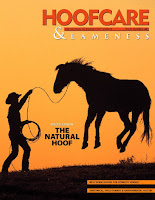Emma, a miniature donkey foal, was just two days old when she arrived at
Auburn University's John Thomas Vaughan Large Animal Teaching Hospital with a severe hind limb deformity, one that required amputation of the limb and the placement of a prosthesis.
Auburn University's College of Veterinary Medicine and
the Hanger Clinic, formerly Hanger Prosthetics and Orthotics, have been working together since April on this case that could have implications in the treatment and rehabilitation of horses, donkeys and other equids with congenital deformities or injuries.
Dr. Fred Caldwell, an assistant professor in the Department of Clinical Sciences and equine surgeon, performed the amputation procedure, and is working with clinician Billy Fletcher from Hanger Clinic – the same company which made the prosthetic tail for Winter, the amputee dolphin and star of the film "Dolphin Tale" – to develop a prosthesis for her limb. The two worked out a plan to both allow Emma time to heal from the surgery and transition from her cast to the prosthesis.
 |
| Emma's fitting session for the new pink prosthesis that accommodates her growth. |
"Billy was excited and enthusiastic to assist," Caldwell said. "Once we proceeded with the surgery and amputated the distal limb, he provided a small footplate to incorporate into the cast to even out the length of her hind limbs so she could bear weight until we could get the surgical site healed and have her fitted with a prosthesis. It has been a group effort on behalf of many caring individuals willing to go to great lengths to save her."
Emma's case is providing a unique and beneficial teaching opportunity for everyone involved. The practice of using prostheses with large equids is relatively uncommon because of their size and weight-bearing limitations.
But because Emma is a miniature donkey, she will be fairly small as an adult, weighing approximately 350 pounds when fully grown. This gave Caldwell and Fletcher hope for a positive prognosis and success in Emma's treatment.
Emma is now 11 weeks old and has been thriving with her prosthesis, making an impression on everyone who has worked with her.
 |
| An earlier version of Emma's prosthetic hind limb. |
"She absolutely loved it from the get-go," Caldwell said. "It was a very impressive design and she did very well in it. She has progressed to the second iteration of her prosthesis, which doesn't incorporate as much of the limb and allows her more range of motion. She is getting stronger; she's growing and doing wonderfully."
Fletcher said that as Emma grows, she could potentially transition through eight or nine variations of the prosthesis before reaching her full size. At that point, she will be fitted with a piece that is more permanent.
The prosthesis is made of carbon fiber, Kevlar and fiberglass. These are materials that are strong and extremely light, and are the same materials used for prostheses for Paralympic athletes. The materials are also flexible and adjustable to allow for growth and progression in Emma's gait.
The first finished prosthesis weighed less than a pound; the most recent iteration, which is pink, is smaller, but weighs a little more to provide stability as she's grown taller and almost doubled her weight since surgery.
"The next step is trying to make sure we keep the prosthesis set up so she's ambulatory and she can run and play and do things uninhibited, but also, to keep the area of concern, the surgical site, offloaded so Dr. Caldwell can do his job in keeping her completely healed," Fletcher said.
 |
| Emma shows off her latest prosthesis. Notice how it cups the hock. |
"As time goes by," he continued, "we'll continue to provide a prosthesis that's going to allow for growth. We want to provide her with full range of motion, but also give her the ability to use full strength. I think she's got that in her current set-up, so the big thing now is keeping everything offloaded so she heals completely; we'll continue to increase the size of the prosthesis as she grows."
Caldwell said he has learned a tremendous amount from the case and it has given him hope that in the future amputation and prosthesis could be a more feasible option for larger horse patients.
Story by Carol Nelson, Communications Editor at Auburn Univeristy
 © Fran Jurga and Hoofcare Publishing; Fran Jurga's Hoof Blog is a between-issues news service for subscribers to Hoofcare and Lameness Journal. Please, no use without permission. You only need to ask. This blog may be read online at the blog page, checked via RSS feed, or received via a digest-type email (requires signup in box at top right of blog page). To subscribe to Hoofcare and Lameness (the journal), please visit the main site, www.hoofcare.com, where many educational products and media related to equine lameness and hoof science can be found. Questions or problems with this blog? Send email to blog@hoofcare.com.
© Fran Jurga and Hoofcare Publishing; Fran Jurga's Hoof Blog is a between-issues news service for subscribers to Hoofcare and Lameness Journal. Please, no use without permission. You only need to ask. This blog may be read online at the blog page, checked via RSS feed, or received via a digest-type email (requires signup in box at top right of blog page). To subscribe to Hoofcare and Lameness (the journal), please visit the main site, www.hoofcare.com, where many educational products and media related to equine lameness and hoof science can be found. Questions or problems with this blog? Send email to blog@hoofcare.com.
Read this blog's headlines on the Hoofcare + Lameness Facebook Page
Disclosure of Material Connection: I have not received any direct compensation for writing this post. I have no material connection to the brands, products, or services that I have mentioned, other than Hoofcare Publishing. I am disclosing this in accordance with the Federal Trade Commission’s 16 CFR, Part 255: Guides Concerning the Use of Endorsements and Testimonials in Advertising.



imothep+xray+ipad+6928612052_6717159ac9.jpg)































